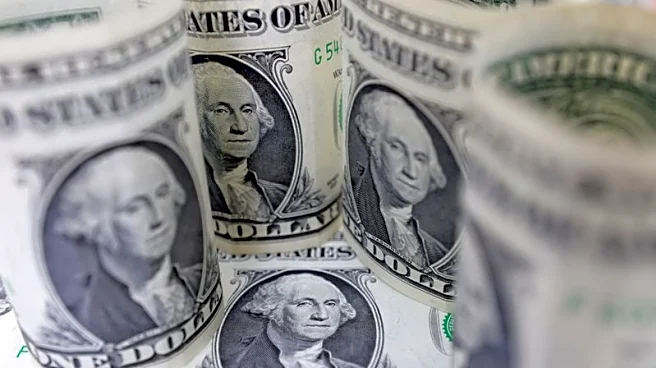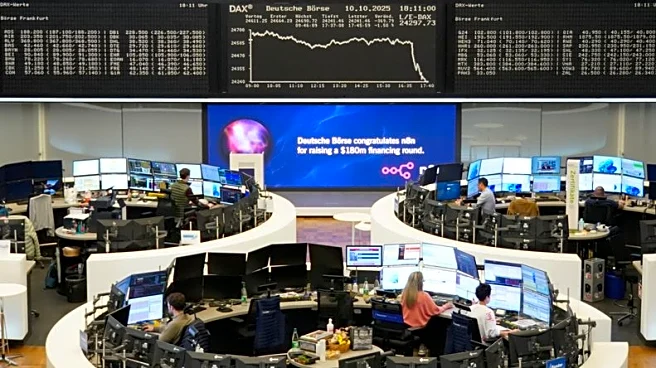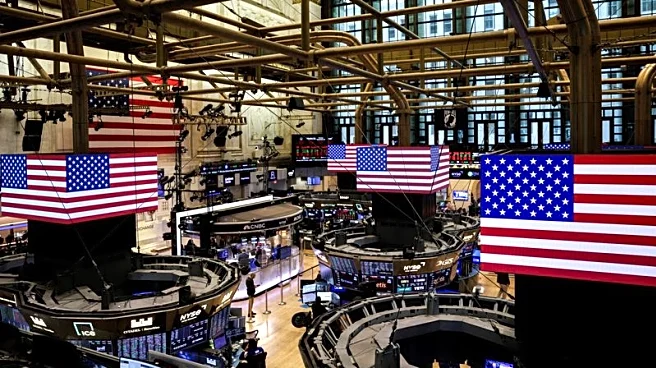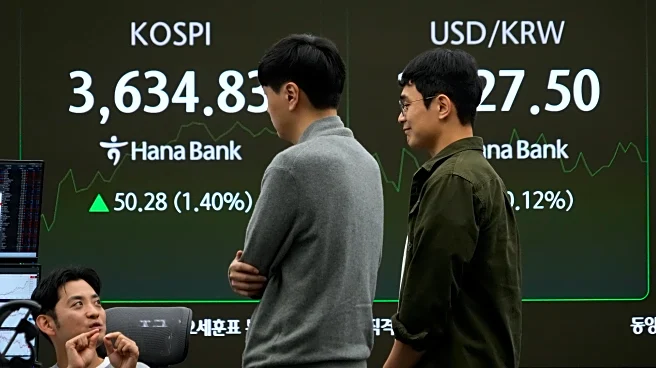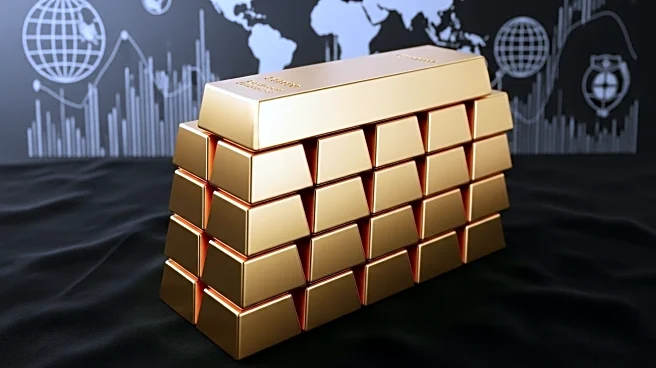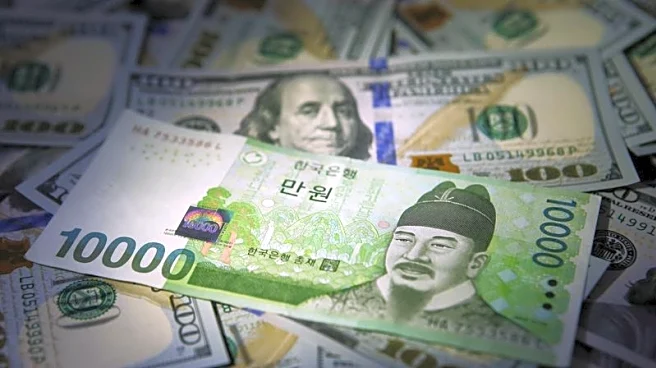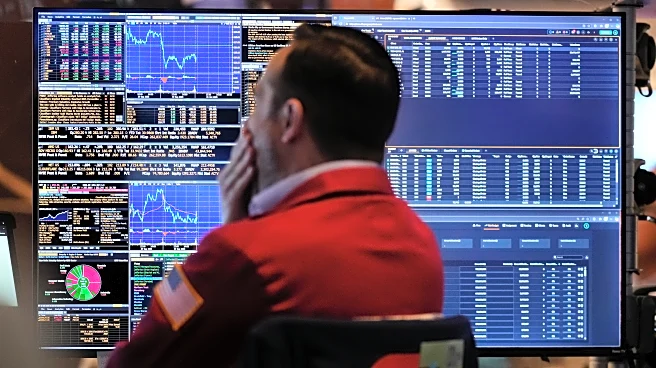What's Happening?
Gold prices have reached a record high, surpassing $4,100 per ounce, driven by expectations of a U.S. Federal Reserve rate cut and renewed trade tensions between the United States and China. The increase in gold prices is attributed to geopolitical and economic uncertainties, strong central bank buying, and robust exchange-traded fund inflows. Spot gold rose to $4,128.49 per ounce, while U.S. gold futures for December delivery climbed to $4,144.10. Analysts from Bank of America and Societe Generale forecast gold to hit $5,000 by 2026. Silver also saw a rise, reaching a record high of $53.60 per ounce, supported by similar factors affecting gold.
Why It's Important?
The surge in gold prices reflects investor sentiment regarding economic stability and monetary policy. As a safe-haven asset, gold's rise indicates concerns over potential economic downturns and trade conflicts. The anticipation of a Federal Reserve rate cut suggests a shift towards more accommodative monetary policy, which could impact borrowing costs and investment strategies. The ongoing trade tensions between the U.S. and China further exacerbate market uncertainties, influencing commodity prices and global trade dynamics. Stakeholders in the financial markets, including investors and policymakers, are closely monitoring these developments for potential impacts on economic growth and inflation.
What's Next?
Investors are awaiting further insights from Federal Reserve Chair Jerome Powell's upcoming speech at the NABE annual meeting, which may provide clarity on the Fed's monetary policy direction. Additionally, the meeting between President Trump and Chinese leader Xi Jinping in South Korea later this month could influence trade negotiations and market sentiment. The outcome of these events may affect future commodity prices and economic forecasts. Analysts are also watching for any dovish surprises from the Federal Open Market Committee (FOMC) meeting, which could further drive gold prices upward.
Beyond the Headlines
The rise in gold prices highlights broader concerns about global economic stability and the effectiveness of monetary policy in addressing these challenges. The interplay between geopolitical tensions and economic policy decisions underscores the complexity of managing economic growth in a volatile environment. Long-term shifts in investment strategies may occur as investors seek to hedge against uncertainties, potentially influencing asset allocation and market dynamics.




